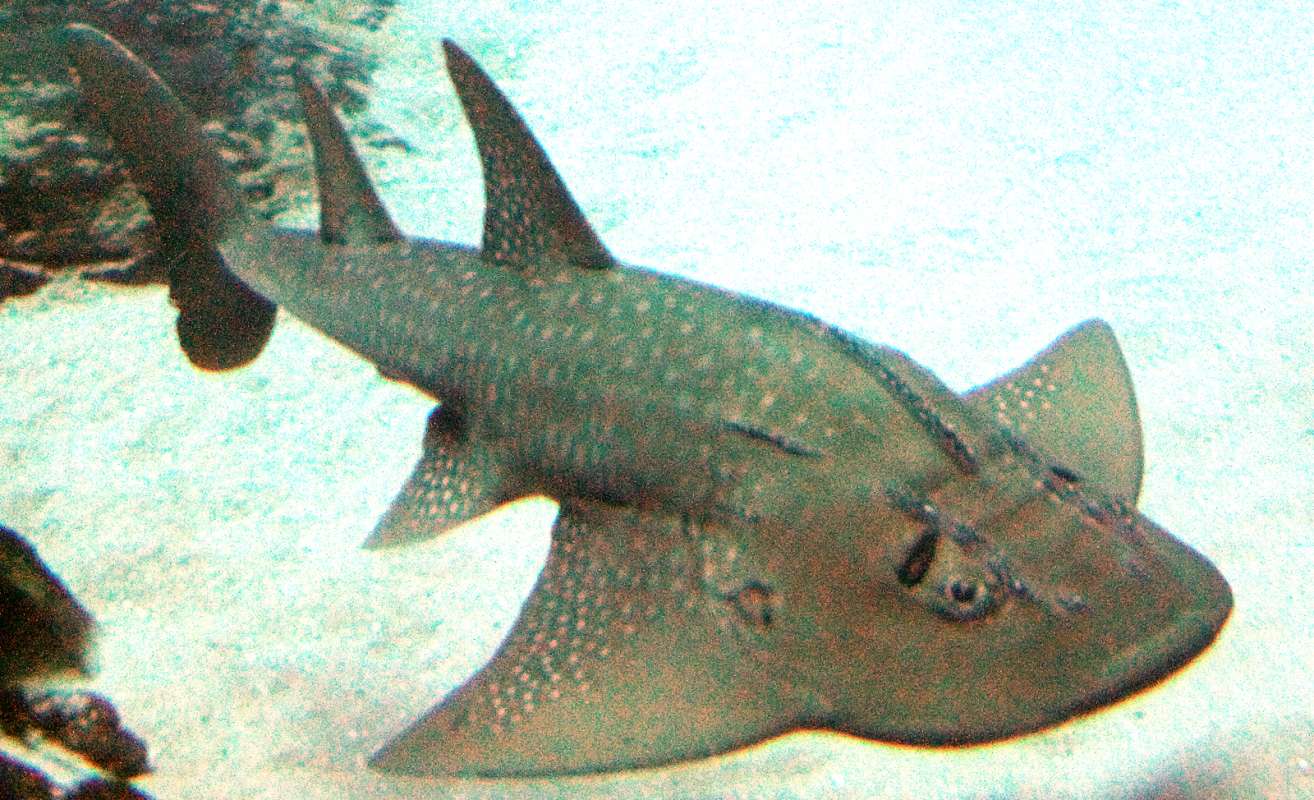SPECIES INFO
Large spotted guitarfish (Rhina ancylostomus) is found widely in the Indian and Pacific Oceans. This species can reach 9 feet in length and weigh up to about 275 pounds. The large spots will help identify this species. Furthermore, there are spines near each eye, and also a few spines along the center of the neck.The Rhina genus is used in two places in the taxonomy tree. This is used for a genus of large weevils found in the New World tropics, and also used in the shark related guitarfish group.
Guitar Fish (Family Rhinobatidae) are a group of raylike fish with the forward portion of their body appearing raylike, and the rear portion appearing more fishlike. There are about 30 different species of guitarfish. Most guitarfish are less than 6 feet long. The largest guitarfish species can weigh over 500 pounds.
Rajiformes contains the skates, guitarfishes, and thornbacks. There are perhaps twenty-five known species. The following are well-known:
Thornback - Platyrhinoidis triseriata - California
Brazil Guitarfish - Rhinobatos horkelli - S. Atlantic
Atlantic Guitarfish - Rhinobatos lentiginosus - Worldwide
Shovelnose Guitarfish - Rhinobatos productos - California
Mediterranean G-fish - Rhinobatos rhinobatos - East Atlantic
Banded Guitarfish - Zapteryx exasperata - Pacific
Sharks and rays (Elasmobranchi), cartilaginous fishes, deserve to be a class separate from the normal fish, in that they do not have a bone skeleton but rather a cartilage skeleton.
Fertilization is internal in this class which also separates them from the bony fish class. Although there are a few fresh water species, the majority of the species in this class are found in salt water. As of 2005, there were about 500 known species of sharks and about 600 known species of rays.
David Ebert, author of a recent book on sharks, rays, and chimaeras of California, counts a total of 988 described species in the class with about 150 additional species awaiting scientific description. He breaks down the described species to 410 species of sharks, 543 species of rays, and 35 species of chimaeras.
Many species of sharks face an uncertain future, as the Chinese purchase shark fins to make shark fin soup. It was estimated that 100 milllion sharks are killed each year for this purpose. However, recent estimates indicate the Chinese are reducing their consumption of this exotic soup.
Backboned Animals (Phylum Chordata) are the most advanced group of animals on earth. These animals are characterized by having a spinal cord or backbone. Most members have a clearly defined brain that controls the organism through a spinal cord. Fish, amphibians, reptiles, birds, and mammals are in this phylum.
Currently, some taxonomists believe that the fish should be divided into two groups (sharks and regular fishes) and that there are some other primitive groups in the phylum such as hagfish or lampreys.
Animal Kingdom contains numerous organisms that feed on other animals or plants. Included in the animal kingdom are the lower marine invertebrates such as sponges and corals, the jointed legged animals such as insects and spiders, and the backboned animals such as fish, amphibians, reptiles, birds, and mammals.


